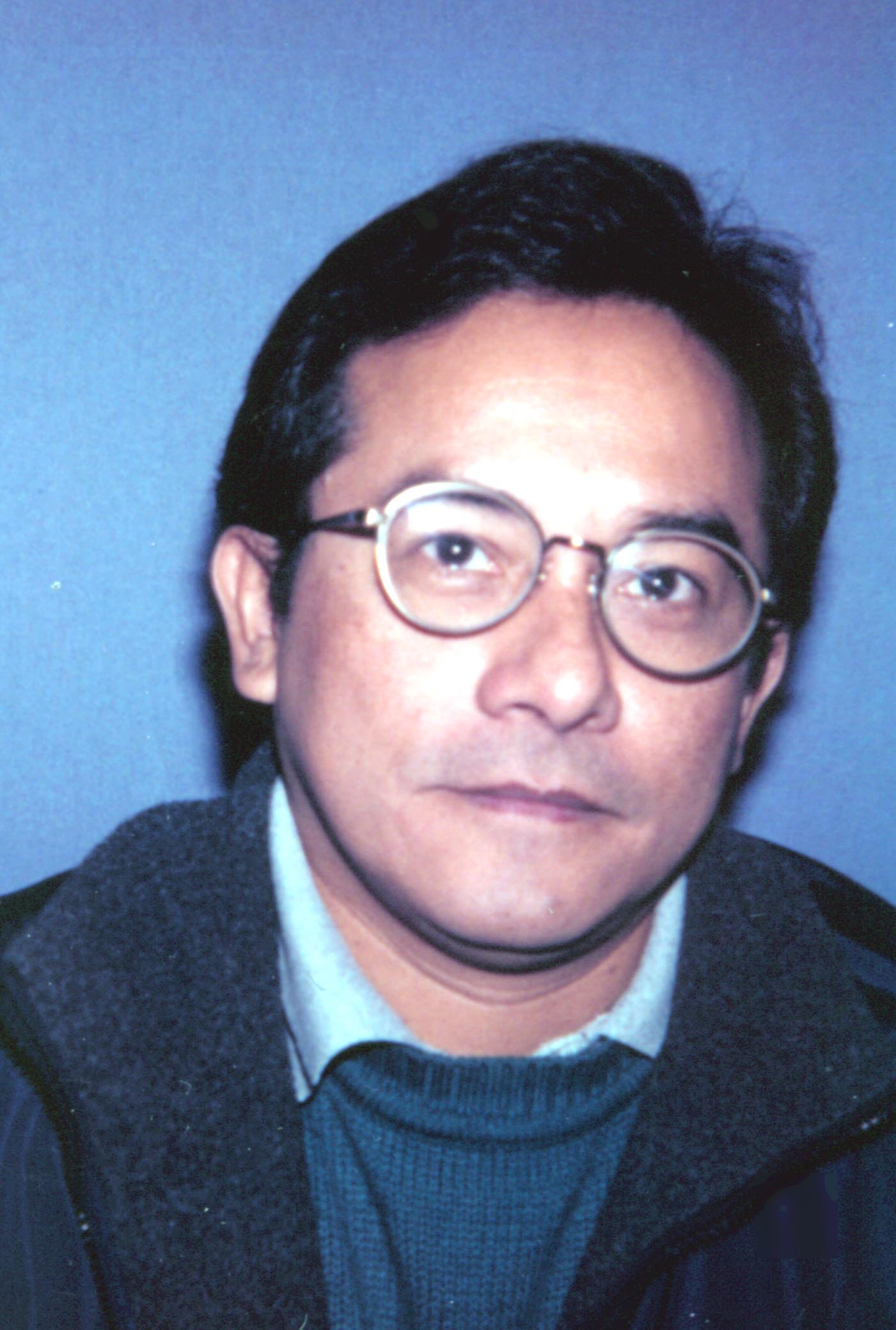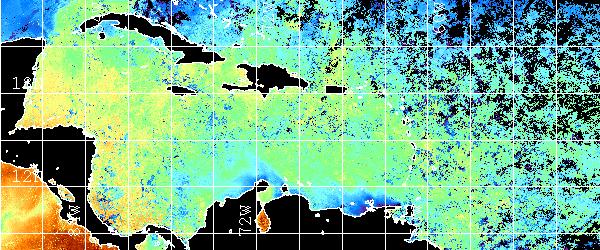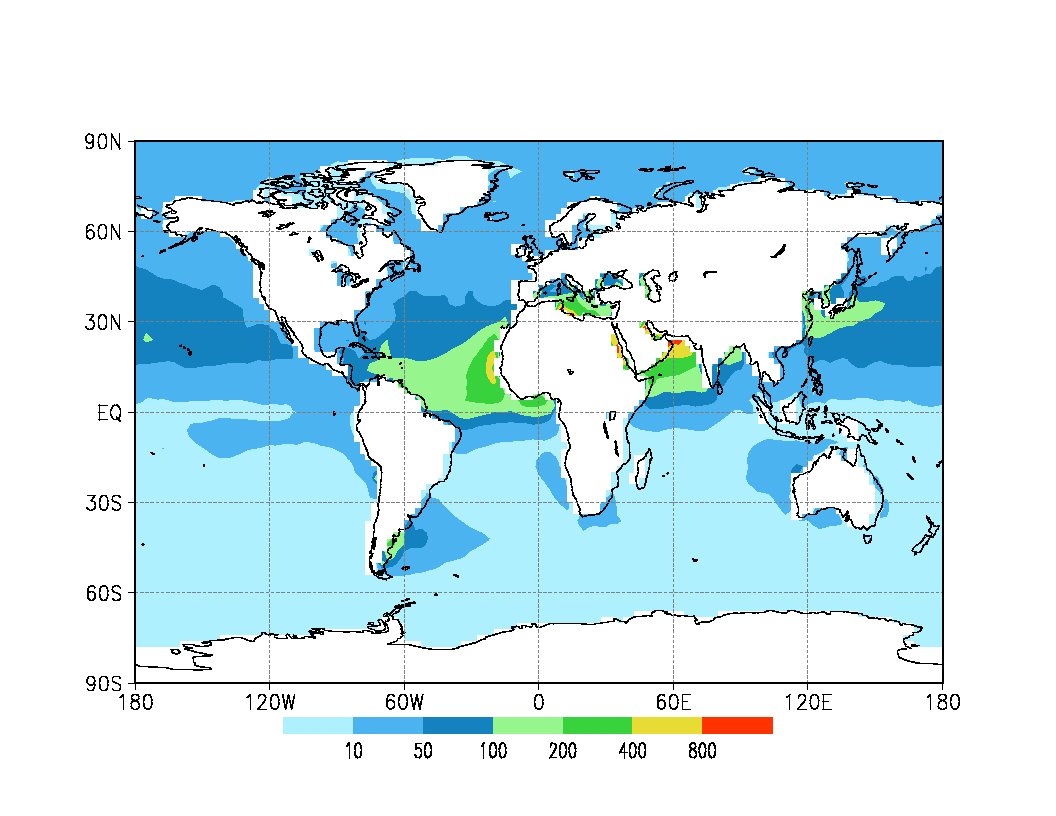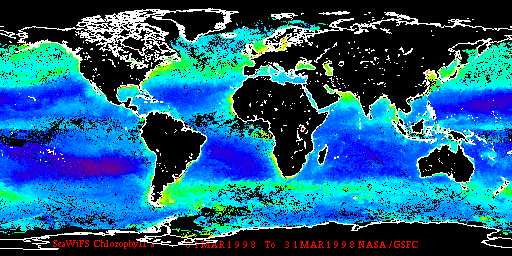
 |
Jose L. Hernandez, Ph.D.
|
 March-1998 SST from AVHRR-NOAA 12:Coastal upweling at North coast of South America. |
 GOCART modeled dust deposition | 
|
PROJECTS
Modeling the effects of meteorological variability on atmospheric carbon species distributions using the Goddard data Assimilation System. Next animation shows the global variations of CO2 at four tropospheric levels CO2 atmospheric concentrations, Dec-97 to Dec-99 from
PCTM.
Support in climate research at ORNL Computational Climate Dynamics group : modeling and diagnostic
Geophysical Data Sets
Land cover change and Carbon emissions: Regional Modeling of Climate Change
Scenarios in Central America ( project website) The goal is to develop fine-scale satellite-based land cover maps to assess
regional carbon stocks and to study the importance of land use human induced changes compared to naturally occurring events in the
Mesoamerican Corridor. High performance computers in ORNL are used to run models to analyze future conditions of Central America base on IPCC scenarios.
For that purpose we use state-of-the-art regional (MM5) and global climate models.
We analyze first the model performance under different spatial resolutions and physics configurations before run decadal climate simulations.
It is advisable for climate simulations to evaluate models and their physics schemes,
against observations before trust numerical model results. Additional research needs to be done for any specific region.
To reconcile regional model and observation data we need to consider up to date maps of land cover categories, accurate soil moisture availability
and appropriate land-air and land surface parameterizations.
Ocean biogeochemistry and carbon sequestration modeling experiments are the matter of investigation in a joint effort involving Los Alamos National Laboratory, ORNL,
MBARI, and University of Maine. A biogeochemistry model that incorporates improved schemes for interactions between living and nonliving material in the ocean is used to quantify the role of the ocean as a natural pump of green house gases.
Simulations under two different 3D grids are carried out study the influence of resolution in model performance. (model diagnose.)
RESEARCH INTERESTS
Today, geosciences use a wide variety of models that represent to our best knowledge the interactions between land, ocean, atmosphere and ice reservoirs, and some of this models incorporate biogeochemical and/or anthropogenic effects depending on the investigations and the temporal or spatial scales we are exploring.
We use global and regional models to study the past, present and future conditions in our planet or in our particular regions; however the Earth system consist of a complex web of interactions which change in time and space, making difficult the description of climate everywhere.
Because of this, it is very important to carry out diagnostic analysis before we grant confidence to our model results.
10 years surface temperature monthly average from PCM
Iron in the atmospheric dust can stimulate oceanic phytoplankton concentrations and in this way ifluence the efficiency of the biological pump of carbon into the ocean.. Carbon exportation to depth depends on primary productivity and photosynthesis at the sea surface and ocean currents that influence the atmospheric concentrations of CO2.
Remote sensing represents an important tool to monitor oceanographic features like sea surface temperature
and chlorophyll concentration. How one of these variables affect the other and how they are related to ocean-atmosphere
exchange of energy and gases? . That is matter of my current interest. I have been involved in processing, analyzing, and applying
remote sensing data.
A sequence of sea surface temperature (SST_1998)
show the SST monthly distribution during
1998 at the Caribbean Sea. This semi-enclosed sea in the tropical Atlantic Ocean present upwelling in Colombia and Venezuela
coasts which consists of wind driven vertical transport of deep and cooler water to the sea surface. The wind affect the vertical structure of the upper ocean by mixing, and is the forcing of vertical nutrient transport when it run parallel
to the coast. Because this enhancing of nutrients the surface chlorophyll show higher concentrations where upwelling occurs.
The Caribbean Sea System: Its Physical Oceanography and Role in Northern Hemisphere Climate Variability was a session in
2001 American Geophysical Union Fall Meeting.
PEER-REVIEWED PUBLICATIONS
A regional climate study of Central America using the MM5 modeling system: Results and comparison to observations, J. L. Hernandez, J. Srikishen, D. J. Erickson, R. Oglesby, D. Irwin. Paper accepted for publication in the International Journal Of Climatology.
Ecodynamic and Eddy Admitting Dimethyl Sulfide Simulations in a Global Ocean Biogeochemistry/Circulation Model, S. Elliott, Chu, S., M. Maltrud, J. Hernandez and D. J. Erickson III, Earth Interactions, vol. 8, paper 11, 2004. abstract.pdf .
Atmospheric iron delivery and surface ocean biological activity in the Southern Ocean and Patagonian region , D. Erickson, J. Hernandez, P. Ginoux, W. W. Gregg, C. Mc. Clain, J. Christian, Geophys. Res. Let., Vol. 30, No. 12, 1609, doi:10.1029/2003GL017241, 2003 (paper) pdf.
citations
A Global, High Resolution, Satellite-based global model of Air-Sea trace Gas Flux ,
D. Erickson, J. Hernandez, Gas Transfer at Water Surfaces, Geophysical Monograph 127, American Geophysical Union, 2002.
(paper in book)
MEETINGS AND SELECTED PRESENTATIONS
High Resolution Regional Modeling and Land Use in Central America, J. L. Hernandez, C. Perez, D. J. Erickson, R. Oglesby, D. Irwin.
Paper presented in the Caribbean Climate Symposium, Mayaguez, Puerto Rico, April-2006.
Development in Geoscience and Social Benefits: Caribbean and Central American Region, J. L. Hernandez, J. L. Hernandez, invited presentation in the Social and Scientific Thinking in the Naval School series of lectures and inauguration of the Master program in Physical Oceanography,
Naval Academy Almirante Padilla, Cartagena, Colombia, March, 2006.
2005 Training Workshop: Regional Climate Modeling in Central America, SERVIR: USAID-NASA-ORNL Project,(organizer and instructor), R. Oglesby, D. Erickson, J.L. Hernandez, J. Srikishen D. Irwin; Water Center for the Humid Tropics of Latin America and the Caribbean, October 18-20, 2005, Panama, Republic of Panama.
( SERVIR) . Agenda
Assessment of PCM Results for Predictions of Climate Changes in the Caribbean, Moises Angeles, J. E. Gonzalez, P. Mulero, D. J. Erickson, III, and J.Hernandez-Figueroa, 16th Conference on Climate Variability and Change, The 85th AMS Annual Meeting, San Diego, CA.
( presentation, Jan-2005).
2004 Training Workshop: Regional Climate Modeling, SIAM-SERVIR: USAID-NASA-ORNL Project,(organizer and instructor), R. Oglesby, D. Erickson, J.L. Hernandez, J. Srikishen D. Irwin; Water Center for the Humid Tropics of Latin America and the Caribbean, August 16-19, 2004, Panama, Republic of Panama.
( Webpage of the Workshop) .
Intercambio de gases en la superficie del mar y Surgencia en el Caribe Colombiano, J. Hernandez, S. Lonin, First Workshop on NODC in Colombia, Centro de Investigaciones Oceanográficas e Hidrográficas, 21-23 Julio-2004, Cartagena de Indias, Colombia.
(presentation)
Future U.S. Energy Use for 2000-2025 as Computed with Temperatures from a Global Prediction Model and Energy Demand Model,
S. Hadley, D. Erickson, J. Hernandez, 24th USAEE/IAEE North American Conference, Washington, DC, USA. 2004 (acepted paper USAEE-pdf).
Atmospheric Iron Flux and Surface Chlorophyll at South Atlantic Ocean: A case study Near Patagonia J. Hernandez, D. Erickson, P. Ginoux, W. Gregg, C. McClain, J. Christian, 2002 American Geophysical Union Fall Meeting, San Francisco, Cal. (poster) pdf .
Sea Surface Heat Flux in the North Tropical Atlantic and Aerosol Deposition, J. Hernandez; D. Erickson III., 2001 American Geophysical Union Fall Meeting, San Francisco, Cal. (poster) pdf .
Atmospheric Iron Flux and Surface Chlorophyll in the North-Western Tropical Atlantic, J. Hernandez, D. Erickson III, P. Ginoux, IX COLACMAR Congress, September/16/2001, San Andres, Colombia (paper in memories of the Seminar)
pdf .
CO2 and Biogeochemical Simulations Inside GCMs, ORNL-NASA Workshop, June/4/2001, Oak Ridge National Laboratory, Oak Ridge, TN (presentation).
The Correlation between Atmospheric dust deposition to the Surface Ocean and SeaWIFS ocean color: A Global Satellite based analysis D. Erickson, J. Hernandez, P. Ginoux, W. Gregg, R. Kawa, M. Behrenfeld, W. Essaias, C. McClain, J. Christian 2000 American Geophysical Union Fall Meeting, San Francisco, Cal.
Atmosphere-Ocean Energy and Gases Exchange at the Caribbean Sea and neighboring Atlantic Ocean ,
NASA-Goddard Space Flight Center - Mesoscale Atmospheric Process Branch, July 1999, Greenbelt, MD (seminar).
Ocean Mixed Layer Depth and Thermal Inertia in the Eastern Caribbean Sea: A Simple Model, 1999 American Geophysical Union Spring Meeting, Boston, MA
![]() WAYS TO CONTACT U.S. Mail:
WAYS TO CONTACT U.S. Mail:
Jose L. Hernandez Oak Ridge National Laboratory
Bethel Valley Rd.
POB 2008, Bldg 5600, Rm C215
Oak Ridge, TN 37831-6367